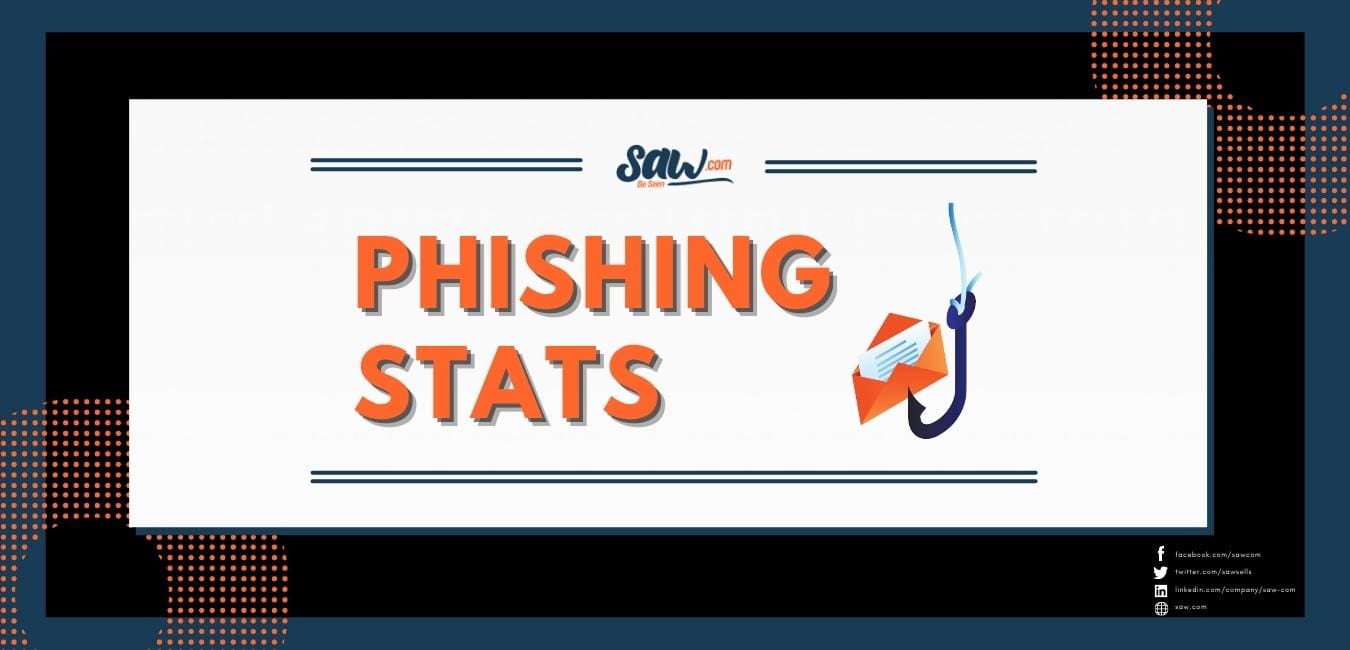As businesses of all sizes move from the physical space to the digital space, whether it’s an increase in online sales, or more employees working remotely, the threat of cyber attacks grows ever more present. It comes down to this – the larger your digital footprint, the larger the cybersecurity risks. But with the rapid migration of most aspects of business towards the digital world, and away from the physical world, it’s impossible for businesses not to increase their digital footprint.
This is why businesses must be vigilant in protecting themselves against the biggest cybersecurity threats. At Saw.com we help you buy a domain and sell a domain, but also help you protect your domain. In this article, we’ll discuss some of those threats and some ways you can protect yourself as a business owner.
4 Cybersecurity Threats for Businesses in 2023
According to a recent study by Cisco, 2021 Cybersecurity Threat Trends, the biggest cyber threat attacks to businesses in 2020 involved cryptomining, phishing, trojan viruses, and ransomware.
1. Phishing
Phishing is the main method through which most cyber attacks occur. In other words, phishing is the starting point to many endpoints such as crytpomining attacks, ransomware, spyware, trojan viruses, and more. It is a scheme that involves tricking the victim into downloading malicious software onto their computer. Bad actors typically do this by disguising themselves as legitimate – either a known business or coworker. They will then prompt the victim into taking action by clicking a link or downloading an attachment.
For example, a malicious actor might register a fake website masquerading as the retailer Walmart. For their fake website, they'll use a technique called domain hijacking and use a capital "i" instead of an L. See waImart.com instead of walmart.com - nearly indistinguishable by the naked eye, right!?
They will then send out phishing emails to unsuspecting victims with known walmart.com accounts. They'll add Walmart branding to the email to make it look legitimate, and they'll include a clickbate subject line to catch your eye. The text of the email might read, "Early Black-Friday Members' Only Sale! Click below for exclusive early access!" Once you click that link, it's game over - the bad guy now can infect your device with a myriad of malicious software.
In the rest of the article, we’ll discuss three types of malware attacks that can stem from the above scenario.
2. Cryptomining
Cryptomining malware, sometimes referred to as “cryptojacking,” is an attack that takes over the victim’s computing power in order to mine cryptocurrencies like Bitcoin, LiteCoin, Ethereum, etc. It’s a fairly technical process by which miners can be awarded cryptocurrency coins without having to pay for them. They do this by using tons of computer processing power to add verified transactions to the cryptocurrency’s blockchain.
Because cryptomining requires so much processing power, it is very expensive and uses tons of energy. Herein lies the appeal of “cryptojacking.” If a bad actor were to hi-jack your computing resources, it could severely slow the performance of your computer system. This could lead to thousands of dollars lost in help desk and IT time resources.
Cryptomining attacks are done either through malware or through the browser itself, and the bad actors usually get you to the bad website by, you guessed it, clicking a link in a phishing email.
3. Trojan Viruses
A Trojan horse virus is a type of malware that, once installed, can read your passwords, record keystrokes, delete, steal, or modify data, and slow the performance of your computer or the entire network.
Trojans work by taking control of your computer to do a variety of harmful tasks. They are referred to as “Trojans” because, like the Trojan Horse of old times, they sneak into your system unnoticed and then wreak havoc once inside. In other words, once the “door” is opened to the Trojan, it’s game over.
Like cryptomining attacks, Trojan attacks are most commonly performed through phishing schemes. You click a link or attachment in a scam email, and the fake website or attachment installs the malware onto your device.
4. Ransomware
Ransomware is another type of malware that encrypts a victim’s computer system, making files and other systems inaccessible. Then, in order to access their system again, the victim is required to pay the hacker a ransom fee.
Because these attacks can bring businesses and organizations to their knees in an instant, hackers are usually paid their ransom as the victims have no other choice. Ransom costs can range from hundreds to thousand and even millions of dollars.
And once again, the most often used method for ransomware attacks is through phishing emails. Bad actors target individual employees of organizations and trick them into giving them access to the system.
How to Combat Cybersecurity Threats
If you haven’t noticed, a common theme is that most malicious software is spread through phishing attacks. In other words, hackers are getting access to victims’ systems because the victims themselves are giving them access. That is why the best way to avoid attacks like these is to educate your employees on how to spot and avoid phishing emails.
Nonetheless, humans aren’t perfect and there will always be the chance that an attack will occur. Additionally, as bad actors become more sophisticated, it is becoming harder and harder to avoid cyber attacks. Alas, as business owners, we should still do everything we can to stay a step ahead of the bad guys.
A great way to protect your brand from being involved in phishing schemes is to protect your domain name from hijacking. Here’s what you can do:
- Register your TLD with the Trademark Clearinghouse. This is not a requirement. However, this could provide you legal protection in case someone registers a name infringing on your trademark. However, if someone does register an infringing name, you would have to go through the legal process, which would cost you a lot of time and money.
- Use a proactive blocking service like AdultBlock. Blocking services automatically block registrations of infringing domains. This includes unlimited variants (look-a-likes) based on the holder’s labels! AdultBlock blocks names under the four adult-themed TLDs – .XXX, .ADULT, .SEX, and .PORN. Get AdultBlock with Saw.com today, and block trademarked domains under all four TLDs for up to ten years.
- Defensively register common misspellings of your domain. This will give you “ownership” of the domain so that no one can use it for nefarious purposes. If you’re willing to spend money to avoid legal fees, defensive registration is a good option to protect yourself from infringement.
Interested in Protecting a Domain?
Are you a business owner looking to protect you domain? Our team can help you!
To learn more about the ways you can protect your business, contact one of our professionals at Saw.com today!

